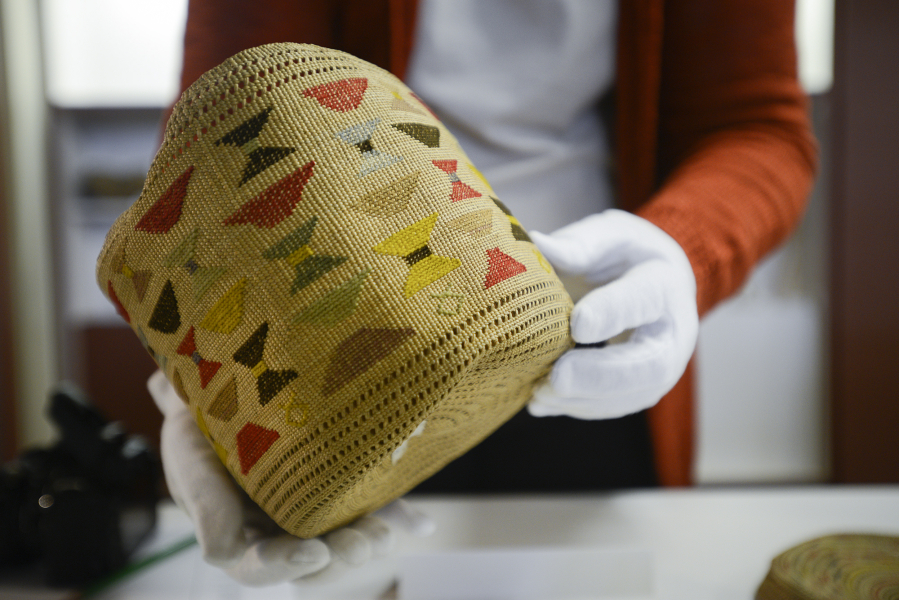The baskets needed a break.
Now a temporary museum closure is helping them step out of the spotlight.
With the Clark County Historical Museum closed for remodeling, its contents are moving out. That includes the “Woven History” exhibit that has been on display since 2004.
Museum staffers are taking 98 pieces of American Indian basketry out of a gallery this week and boxing them up for long-term storage.
“It’s an amazing collection,” said Katie Anderson, the museum’s executive director.
Amazing on several levels, actually.
As she examined a small cedar-bark basket made for huckleberry picking, Anderson explained what she found amazing: “That it’s survived, for one thing.”
It’s also a great example of someone making use of the resources at hand, she said.
Another artifact, an Aleut basket woven from rye grass, amazed her because of its combination of native artistry and practicality.
“It was made for utilitarian purposes, but it’s incredibly beautiful, too. It looks so delicate, yet it’s made to be used,” Anderson said.
The artistry is even more impressive when the baskets are removed from their protective glass cases. Nothing stands between a viewer and the distinctive woven patterns and bold geometric designs created with plant fibers.
“It was such a thrill to hold them, to see them up close,” said Julie Daly, who was part of the team that organized the exhibit more than a decade ago.
“Native American culture is so complex and multifaceted. You can look at one piece and realize what a deep understanding they had of the land they lived on and the materials that were available.”
Then you have to consider “the years it took to learn to weave, and how they worked out complex geometric designs in their heads.”
It was the aspect of the hand-crafting that impressed Daly, she said. “Any culture can create something beautiful with machinery and time. They had their two hands.”
Daly also edited a “Woven History” book published in 2004 to accompany the exhibit’s launch.
There is no way to nail down the age of any specific basket, Daly said.
“It’s hard to tell. Ones that look very old might just be well-used,” said Daly, who credits her own basket-weaving teacher, Norma McGraw, with sparking the “Woven History” project.
Daly does peg the typical age of items in the collection at “100 years easily. One or two are 150 years old, maybe.”
A century-old basket is near the end of its natural lifespan, Daly said — another good reason for putting the collection into storage for a few years.
Even inside a glass case, light takes its toll on the natural materials. As part of the take-down process this week, Anderson photographed each basket, gave it a careful inspection and noted its condition in a log.
“We have seen that some strands have broken, likely because of light exposure,” Anderson said.
Light also changes coloration.
The transition illustrates a couple of familiar issues for museum professionals. When people donate artifacts to a museum, they usually want to share their family treasures with the community, said Brad Richardson, the museum’s curator.
“They want them on permanent display,” Richardson said. “I get that. But things need to get away from light if we want to keep them.”
“It’s balancing access and preservation,” Anderson said.
And, the “Woven History” display showcased less than half of the museum’s overall 220-piece basket collection. There is never enough room to show everything in a museum’s inventory. Switching exhibits also gives visitors something new to see.
“We have a ton of stuff off-site — cool stuff that we’re not able to share,” Anderson said as she picked up another basket with gloved hands and carefully inspected it.
That might be another amazing aspect of the collection. When tribal weavers were making these baskets, Anderson said, “they couldn’t imagine people would be handling them with gloves on.”




